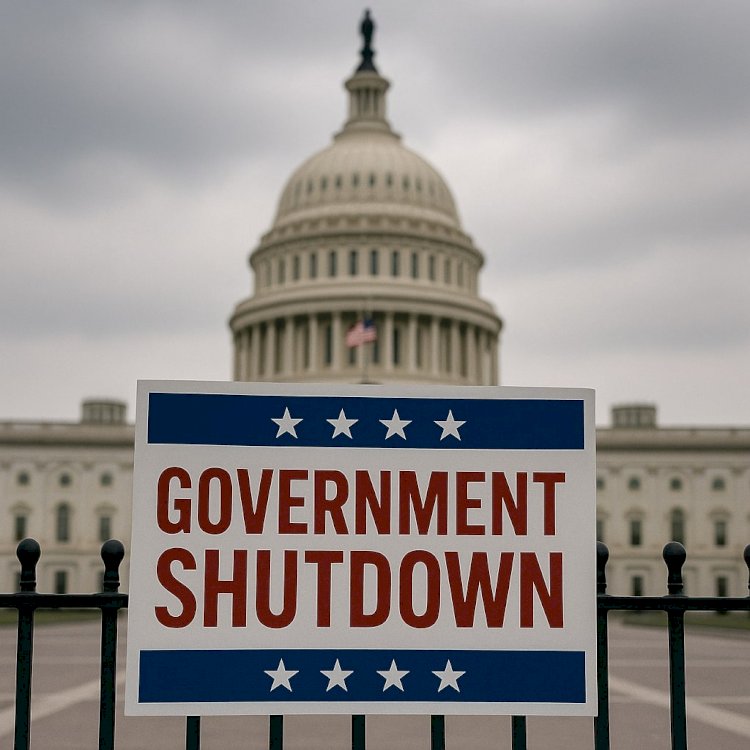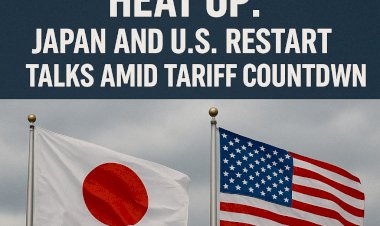U.S. Government Shuts Down as Congress Fails to Break Budget Deadlock

Washington, D.C. — October 1, 2025 — The U.S. government has officially shut down after lawmakers failed to agree on a funding package for the new fiscal year. The breakdown, driven by fierce disputes over healthcare subsidies and spending priorities, has forced federal agencies to scale back operations, furlough workers, and brace for an uncertain road ahead.
A Standoff at the Heart of Washington
The shutdown was triggered at midnight when the Senate rejected a stopgap measure backed by Republicans in the House. That measure would have temporarily extended government funding but did not include the renewal of enhanced Affordable Care Act tax credits—an item Democrats insisted was non-negotiable.
The White House had signaled for days that agencies should prepare for a prolonged shutdown, even raising the prospect of permanent staff reductions, a step beyond the temporary furloughs that have accompanied past funding lapses.
What’s Still Running, What’s Not
While essential functions continue, many parts of government are grinding to a halt.
Ongoing operations include:
-
Social Security and Medicare benefits
-
Postal Service deliveries
-
National defense, border patrol, and air traffic control (though workers may miss paychecks)
Services facing disruption:
-
Most of the Securities and Exchange Commission and Commodity Futures Trading Commission staff have been sent home, halting routine regulatory oversight.
-
Roughly two-thirds of the Centers for Disease Control and three-quarters of the National Institutes of Health employees are furloughed, limiting health programs and scientific work.
-
National parks remain partly open, but visitor centers and facilities are shuttered.
The Toll on Federal Workers and Agencies
The shutdown immediately affects about 750,000 federal employees, many of whom are now on unpaid furlough. Each day the government remains closed could cost an estimated $400 million in lost compensation.
Although federal law guarantees back pay once funding is restored, the looming possibility of job eliminations has added a new layer of anxiety. Unions and watchdog groups warn that morale inside agencies is plummeting.
Health services are among the hardest hit. Agencies like the CDC, NIH, and HHS face reduced staffing levels that could delay research, hinder outbreak monitoring, and weaken oversight.
Economic and Market Impact
The closure also weighs heavily on the financial system. With most of the SEC and CFTC sidelined, approvals of IPOs, ETFs, and new regulatory filings will stall. Markets are bracing for turbulence as economic data releases slow and oversight gaps widen.
Still, the Federal Reserve and FDIC remain insulated, thanks to their independent funding structures.
Where the Fight Goes Next
Lawmakers now face mounting pressure to strike a deal. Options on the table include:
-
Passing another short-term funding extension with concessions
-
Approving a broader budget deal that includes ACA subsidy extensions
-
Gradually reopening agencies through piecemeal measures
So far, Democrats remain firm on healthcare subsidies while Republicans push to reopen government without them. Negotiations are ongoing but show little sign of a breakthrough.
A Shutdown Unlike the Last
This shutdown differs from earlier episodes in key ways. For the first time, the administration has openly raised the specter of permanent federal job cuts, fueling unease in Washington. The central role of healthcare subsidies—an issue directly tied to household budgets—adds urgency for millions of Americans.
With the economy already navigating global uncertainty, economists warn that a drawn-out shutdown could have ripple effects far beyond U.S. borders.
As the government’s doors close and federal workers brace for weeks of uncertainty, the standoff underscores just how polarized the political landscape has become. For many Americans, the shutdown isn’t just a fight in Washington—it’s an immediate disruption to daily life, livelihoods, and trust in government.

 content-team
content-team 


















